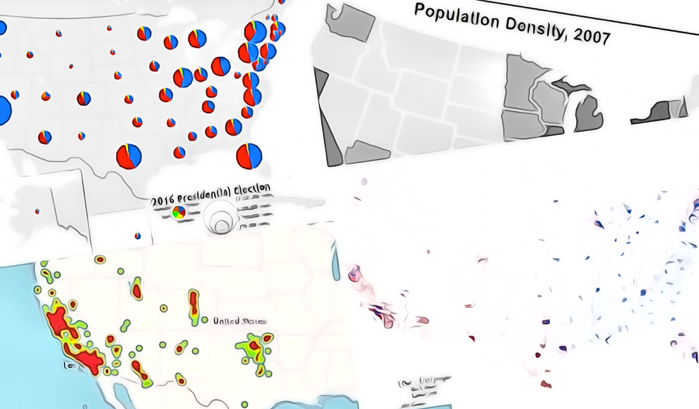The transportation industry faces numerous challenges that disrupt the seamless movement of people and goods. Logistical complexities, inefficient route planning, and escalating costs collectively impede the sector’s efficiency, negatively impacting commuters, businesses, and consumers alike.
To address these issues, policymakers and transport sector leaders can leverage data analytics to enhance the core components of the transportation sector. Data analytics offers powerful solutions that revolutionise the transportation management process, offering industry stakeholders the following benefits:
Real-Time Route Optimisation
Traditionally, planning routes for fleets of vehicles involved relying on static schedules and forecasts. However, these often lead to inefficiencies and delays when faced with dynamic factors such as traffic congestion or unexpected road closures. With the advent of advanced data analytics techniques, the process of route planning has dramatically evolved. Today, transportation managers harness the power of big data to continuously monitor and analyse a myriad of variables that influence travel times and conditions. This includes immediate traffic updates, weather forecasts, historical patterns, and even social media feeds for immediate reports on incidents affecting roadways. Leveraging these diverse data sources and employing sophisticated algorithms enables transportation operators to swiftly compute the most efficient routes for vehicles in transit.
For instance, logistics companies can utilise data-driven transportation management solutions to anticipate traffic patterns and adjust delivery routes accordingly to avoid bottlenecks and minimise idle time. This not only reduces fuel consumption and operational costs but also enhances delivery speed and reliability. Moreover, real-time route optimisation contributes to sustainable practices by minimising organisational carbon footprints. Unnecessary mileage and idle time are reduced, resulting in less emissions released into the atmosphere.
Improved Maintenance and Asset Management
Another significant area where data analytics is revolutionising transportation management is in maintenance and asset management. Vehicle maintenance schedules were often based on periodic inspections or mileage milestones, which could lead to either over-maintenance or insufficient upkeep—both of which impact operational efficiency and safety. With the integration of data analytics, transportation sector stakeholders can adopt a proactive approach to maintenance by equipping vehicles with sensors that monitor various performance metrics (e.g., engine health, tyre pressure, and fuel efficiency) in real time. Predictive analytics algorithms can analyse these data streams to forecast maintenance needs accurately, recommending servicing based on actual usage and performance rather than arbitrary schedules. This predictive maintenance strategy not only extends the lifespan of vehicles but also minimises downtime — thus improving fleet performance.
Furthermore, data-driven insights into asset management enable organisations to optimise fleet composition and allocation. Analysing usage patterns can help transportation managers right-size their fleets and ensure that the right number and types of vehicles are deployed where and when they are most needed. This leads to cost savings through reduced capital expenditure on unnecessary vehicles and improved efficiency in resource utilisation.
Enhanced Passenger Experience
Across various modes of transportation, the ability to gather and analyse vast amounts of data is revolutionising how services are delivered and perceived by users. Transportation providers can examine historical data on passenger volumes, travel patterns, and seasonal trends to better anticipate peak times and adjust service levels accordingly. This allows for smoother operations, reduced overcrowding, and improved scheduling accuracy, leading to less waiting time and greater convenience for passengers.
Real-time analytics also enable operators to provide timely and accurate information to passengers. Whether it’s updates on departure times, gate changes, or service disruptions, passengers can stay informed through mobile apps, digital displays, or automated announcements. This transparency builds trust and satisfaction among passengers, who are likely to appreciate being kept informed and empowered to make informed decisions about their travel plans.
What’s more, data analytics can be used in personalising the passenger experience. Transportation providers can use data collected from customer preferences and behaviour to tailor their services and offers to their customers’ individual needs. For example, airlines can offer personalised travel recommendations based on past bookings, while public transport operators can suggest alternative routes or modes of transport based on current traffic conditions and user preferences.
Safer Transport Services
Transportation operators can harness data from various sources and apply advanced analytics to the safety of their services. They can use onboard sensors, GPS tracking, and even video surveillance to ensure their drivers are following the rules of the road. Analysing the data enables them to identify risky behaviours and issues such as speeding, harsh braking, or fatigue. This can lead to timely intervention, thereby promoting safer driving practices and reducing the likelihood of accidents.
Better Transportation Infrastructure Development
Through the power of data, transportation planners and policymakers can make informed decisions that optimise infrastructure investments, improve connectivity, and enhance overall mobility within communities. They can easily identify areas of high traffic density and inefficiencies in current road networks, enabling them to employ targeted interventions to alleviate congestion and improve traffic flow. Examples of these solutions include road expansions, traffic signal optimisation, or the introduction of alternative transportation modes like bus rapid transit (BRT) systems, cycle lanes, and rail systems.
Moreover, data analytics facilitates predictive modelling for future transportation needs based on population growth projections and economic trends. By forecasting future demand for transport services, planners can anticipate infrastructure requirements and allocate resources effectively. This proactive planning ensures that transportation networks can accommodate future growth while minimising disruptions and cost overruns.
Data analytics is revolutionising transportation across the globe. It’s giving policymakers, transport sector leaders, and even transportation operators the tools to make significant improvements in the efficiency, safety, and sustainability of their transportation management processes. With the proper use of data, the transport industry can build a positive future and meet the evolving needs of communities.
James is the head of marketing at Tamoco


